Discover Solomon Islands Nature
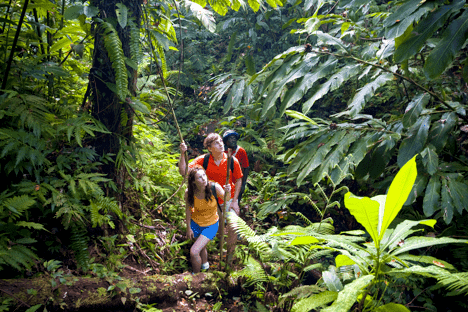
The Solomon Islands archipelago is a haven for animals above and below the water. Our underwater locals are a major drawcard for visitors to our shores. Whether you’re a keen diver, an avid fisherman, an enthusiastic snorkeller or you just love the ocean, you’ll love our underwater paradise. If you love nature, we’ve got beautiful rainforests for you to feel at home. To discover more about the wild and natural beauty of our home, please read on.
Under the Sea
The Solomon Islands are a hidden gem and those in the know love our underwater world. People come from all over the world to visit us and discover our underwater paradise that is untouched by mass tourism and environmental pollution. Expect to see vibrant reef fish, blue-finned tuna, many species of shark, manta rays and much more in this thriving marine eco-system. Sea turtles are common and are the Solomon Islands national animal.
Water clarity is fantastic all year round and it’s easy to navigate your way on a guided snorkelling, surfing or deep-sea diving escapade. And the coral in the Solomon Islands is a kaleidoscope of colours and shapes that make a tranquil home for the marine life in this uniquely tropical ocean zone.
Sky High
Look up for Solomon Islands bird life too. Hikers will be delighted to spot many species of birds as they explore the jungle. The Solomons are renowned for featuring a vast array of bird life species in concentrated areas. There are birds here that you won’t find anywhere else on the planet! The rainforest, coastal and oceanic habitats are ideal for tropical parrots, soaring sea eagles, doves, owls, herons and many more.
Plant Life
Getting outside is good for the soul! Explore the Solomons and breathe in the soothing rainforest air for your most rejuvenating holiday yet. The Solomon Islands are located in remote Melanesia and are mostly made up of 6 main islands including Guadalcanal, Malaita, New Georgia, Makira, Santa Isabel, and Choiseul. It may surprise you that the Solomons are mountainous because we have a volcanic landscape. Add to that regular rainfall and fertile soil and it has organically created a prime environment for plants and flowers to bloom.
When discovering our natural surrounds keep an eye out for some of the prettiest plant life around. The healthy biodiversity is displayed by way of rare wild orchids and stacks of tropical flowering plants. New varieties of plants are still being discovered today! When you see the lush foliage of where the forest meets the sea it really does create a unique experience. Coconut and pandanus palms are everywhere in the 'Hapi Isles'. So why not rest in the shade on the beach and have yourself a locally grown fruit feast?
Come and visit
All in all, an adventure to the Solomon Islands is an invitation to see thriving, almost Jurassic like vegetation up close and personal. Combine this with an abundance of interesting animal life and you have yourself a holiday destination that will connect you back with nature.
Tours and Activities
Birdwatching in Gizo

For those twitchers wanting to find species of birds only seen in the Solomon Island arrangements can be made. You will visit Ghizo Island and its surrounding areas and discover its endemic species.
Rainforest Walks in Suavanao
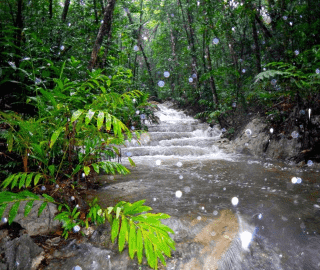
There are many walks to take all with something special on offer such as waterfalls, rock pools and wildlife galore. The walks can vary in difficulty and it is advised to have a moderate amount of fitness to take on the challenge.
Birdwatching in Kirakira
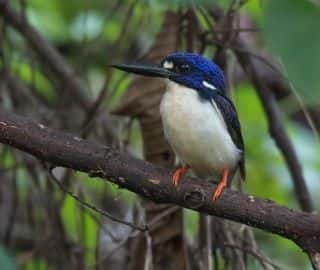
Makira Island is home to the most endemic species in the Solomon Islands. Trails around Kirakira are easily accessible for most. A long and steep trek to the Hauta Conservation area and inland mountains, staying in nearby villages on the way, will delight serious birders with species such as the Makira Thrush, Makira Leaf Warbler, Shade Warbler, Whiteheaded Fruit Dove.
Waterfalls in Choiseul

Tumbling rapids, winding rivers, and steep waterfalls are plentiful around the Northern tip of Choiseul, including Choiseul Bay.
Bush Walking on Taro Island
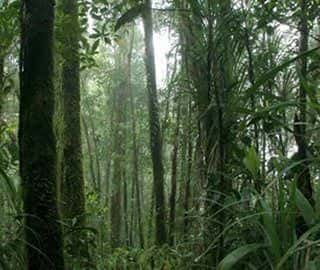
Explore Choiseul Province’s rich flora and fauna and visit the places where cannibals once roamed. The lush forests of Choiseul Province was also the home of the Kuvojo, a pigeon (Microgoura Meeki) endemic to the province and presumed extinct. Tours are available on request.
Hiking in Fera

Track for an hour south east of Buala and experience the Thitiro Falls, or see the Sana River fall straight down into the sea. Climb Mt Kubonitu, the highest peak on Isabel, standing 1392 metres above sea level, and enjoy spectacular views of the area. The Marutho River springs from the mountain and meets the ocean at Hofi. The summit can be reached with the help of guides from nearby Tirotogna and Bara village.
Birdwatching in Fera
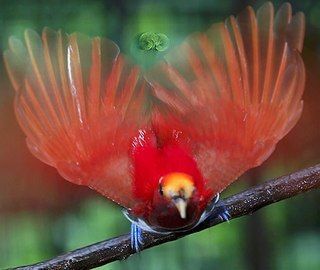
Fera is the perfect starting point for birdwatchers, before they make the trip up the hills to seek out the Black-faced Pitta, Fearful Owl or Solomons Frogmouth. Other species that can be seen include the Imitator Goshawk, Sanford’s Sea-eagle, Woodford Rail, Solomon Boobook and Myzomela. Read more at the link.
Waterfall Tours in Honiara
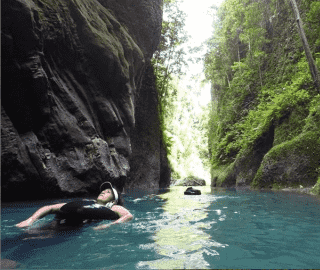
The hike up to the Mataniko Falls takes between 1-2 hours and begins from Lili village, behind New Chinatown and approximately 10-15 minutes from Honiara. The spectacular Tenaru Falls is an hour's drive and a three-hour hike from Henderson Airport. These two hikes will give you an appreciation of the terrain and what the Allied and Japanese soldiers went through during World War II.
Wildlife on Rennell Island
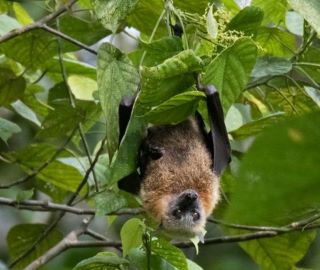
A nature paradise and home to several endemic species, including the Rennell Starling, the Bare-eyed White-eye, the Rennell Shrikebill and the Rennell Fantail. The province also has 730 insect species, an endemic orchid near Lake Tegano, two endemic species of Pandanus, the Rennell flying fox and an endemic lake sea snake.
Attractions
Arnavon Islands
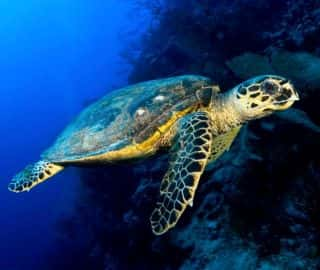
Located between Isabel and Choiseul Province, these four small islands are home to the largest rookery of the critically endangered Hawksbill turtles in the South Pacific. The Arnavon Community Marine Conservation Area was established to protect the remaining Hawksbill turtle population. Learn more about the turtles, swim, snorkel, relax or take a cultural tour.
Riba Cave in Auki
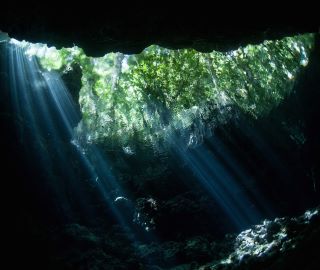
East of Auki is this remote and pristine cave, with stalagmites, large subterranean chambers and an underground river flowing through it. Perfect for active trekkers, it is completely natural in setting and you will require sturdy shoes. You can reach the cave by taxi and walk 5 minutes to the entrance but it is best to go with a guide. Auki is a 30 minute flight from Honiara.
Osi Lake near Auki
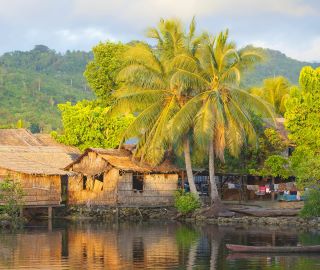
In the Northern part of Auki, Osi Lake is a place in which nature thrives and is especially populated with colonies of sea birds. Take your time, explore the lake in a dugout canoe and take in the beauty of this natural ecosystem. A guide can be organised and a kastom (cultural) fee may be required. Get to know the local villagers and feel at home exploring.
Tetepare Island
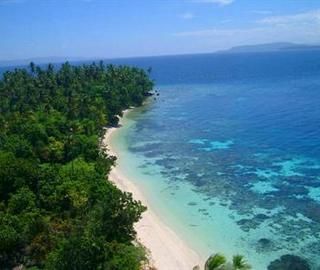
Tetepare Island is the largest uninhabited island in the South Pacific covering approximately 118 square kilometres. Tetepare has untouched rainforest, gorgeous coral reefs, captivating cultural sites and unique wildlife. Swim or snorkel in Tetepare’s beautiful lagoons, walk in the rainforest, bird watch, relax on the beaches or visit cultural sites from the island’s renowned head hunting days. The accommodation is in traditional Melanesian leaf houses and set either on the edge of the rainforest or shores of the lagoon.
Arnavon Island
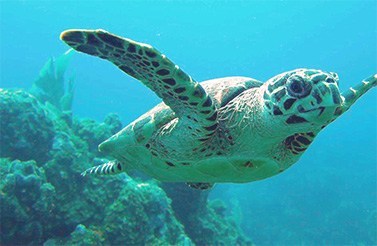
An eventful 1-2 hour boat ride through open seas and strong currents from Kagau will take you to Arnavon Island where you can experience the world reknown Arnavons Community Marine Conservation Area (ACMCA) which covers 40,000 acres, three small uninhabited islands, flourishing reefs, fish-filled lagoons and beaches that are home to thousands of egg-bearing turtles. All bookings are to be done through the Nature Conservacy office in Honiara. The best time to visit Arnavon Island is the turtle nesting season in June, July, and August.
Lake Tegano at Rennell Island

Explore this World Heritage Listed lake with its abundant wildlife unique to the area or see the remains of Catalina seaplanes used in World War II, some being in shallow waters. There are also about 200 islets and various caves in the area, streams to swim in, and opportunities to canoe on the lake using traditional dugout canoes or sea kayaking organised through nearby accommodation.
